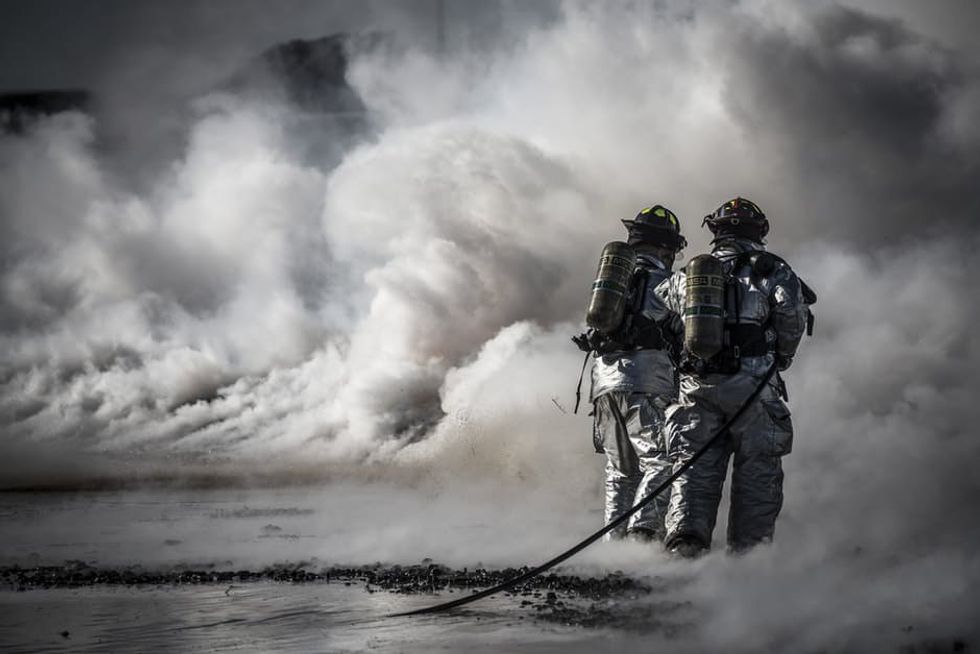From initial spark, fires become frivolous forces that spread like epidemics through ecosystems across the nation. Additionally, fires have been perceived to be an unnerving natural force. However, humans also exert control over fire regimes in a variety of ways.
Whether fires are prescribed or occur naturally, for many environments, fire has become an essential mechanism for the vitality and renewal of various ecosystems and species that inhabit the eco-diverse region.
Notably, forest regions throughout the U.S have often shown signs of fire suppression through the minimizing and or elimination of forest clear cutting and/or prescription of fire burns, which has consequently burdened many threats and/or created many catastrophes such as extreme and inextinguishable forest fires.
Current instances in The Great Smokey Mountains in Tennessee and North Carolina are one example of a diverse and cherished region in which the ecosystem experience fire suppression.
The Great Smokey Mountains are an eastern deciduous forest that is one example of a forest region where forest services do not often practice prescribed fire burns frequently because the ecosystem is a moist and humid environment. Therefore, many trees, shrubs, plants and animals in the Great Smokey region are not fire adapted.
Consequently, forest services fire suppression in this region has lead to a major calamity. experiencing multiple years of droughts in the Rocky Mountain region — along with high temperatures — many of trees and shrubs have died over the last decade and now the area is frivolously burning.
There are many reasons why fire suppression is detrimental for various ecosystems and regions. Prescribed fire burns are essential to the vitality of various environments in regions across the nation.
According to an article provided by the Pacific Biodiversity Institute, the ecological repercussions of fire suppression are severely noticeable and have caused a fairly dramatic change in tree density and forest composition in various regions. Furthermore, fire suppression and management activities have created situations in which a greater concentration of fuel is present throughout fire suppressed regions. Consequently, leading to a higher probability of high-intensity fires, should a wildfire spread into or start a forest region or ecosystem.
Furthermore, there are various ecosystems and species of shrubs, trees and more that have adapted along with fire. However, various plant species demand fire to be able to germinate, a process known as seritony — an ecological adaptation exhibited by specific trees and or plants, in which seed release occurs in response to heat, fire and or smoke as opposed to a natural and or spontaneous reproduction when a seed reaches maturity.
California sagebrush and giant sequoias are two species of trees that are serotinous. Without fire the ability for their seeds to be able to germinate is nearly impossible, often times because they are heavily coated in resins and or trapped in their reproductive cones — only fire can release these serotinous seeds — allowing for germinate to occur.
Fire Ecology is a scientific discipline that has been practiced by various forest regions across the nation because of the restorative and reproductive modality that fire has.
However, the tendency for U.S. Forest Services to oppress prescribed fire burns is consequently and unnerving. Ecosystems are heavily reliant on fire to reduce hazardous fuels in return protecting communities and ecosystems from extreme fires. Prescribed burns also minimize the spread of insects and disease in regions, removes nuancing species that threaten native species to ecosystems, recycles nutrients back to the soil for future reproduction and much more.
For decades, forest fires have been an unnerving force for various. However, it is not necessarily fire that should be feared, it is the suppression of prescribed and natural fire burns that should bring great concern.
According to the U.S. Forest Service, implementing more prescribed fires will decrease the number of extreme wildfires from occurring. Furthermore the U.S. Forest Service, have specialists that meticulously preparing burn plans for prescribed fires, which strategically prescribe the best conditions under which trees, shrubs and other various plant species should burn at to get the best results — moderated at safe temperatures and exposed to appropriate levels of fire.
Weather temperatures, humidity and wind are just few of the environmental considerations in various regions that are taken into account when planing and or conducting prescribed fire burns.
When the correct procedures are taken, ecosystems such as parries, chaparrals, forest and the species that inhabit their environments will remain vigorous. Reverting away from the tendency of fire suppression and further practicing and enforcing the importance in prescribed fire burns will help to eliminate extremities from happening in the future.













































